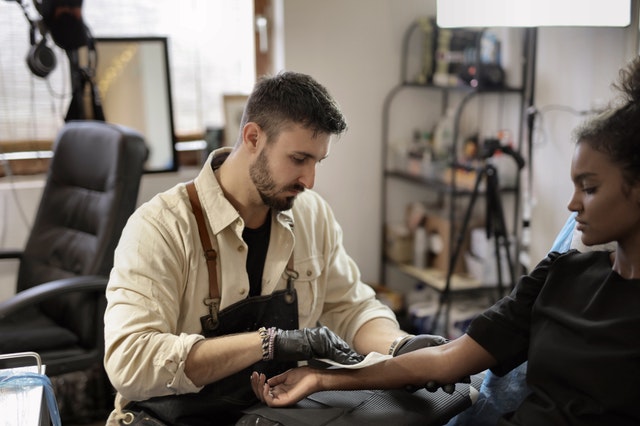Unlike in the past, when society associated tattoos with criminal gangs, ex-convicts and other ritualists, this form of body art is now considered a way of expression. That said, it still isn’t easy to get tattooed on some parts of the body, especially the face, hands, and neck.
Why do some tattooists refuse to tattoo the face and hands? Read on to discover the reasons.
Professional Dilemma
Like a doctor, a tattoo artist must do what is best for their customer. Some clients, either naïve or rash, want to get face and hand tattoos without considering the procedure’s long-term effects.
Professional artists might refuse to draw the art because they know the adverse impacts of visible tattoos on social settings. In some cultures, people with such tattoos are repeatedly mocked and ridiculed, hurting their self-confidence. Some employers also don’t accept job applications with such types of tattoos.
Although you can seek alternatives, it’s better to know what lies ahead before you walk into another tattoo shop. You’ll have time to think about the potential repercussions of your decision.
It is important to keep in mind that tattoos are permanent
.
Quality Issues
Another reason why a tattoo artist might decline to provide services to you is because of quality issues. For instance, it is challenging to recreate high-quality body art on feet and hands.
Since your hands and feet have thinner skin than other parts of the body, tattooing them is an intricate process. Why? After drawing, tattoo ink remains suspended in liquid form between the dermis and epidermis. If the ink goes too shallow or too deep, the resulting tattoo will be far from what you wanted.
Furthermore, hand and foot tattoos are difficult to maintain. From washing clothes to handling heavy equipment, your hands take a lot of abuse daily. This can nudge the ink, resulting in a blurry tattoo. Similarly, feet constantly rub against your shoes and socks as you walk, which can also disrupt the ink.
Reputation
Tattooing is an art business that largely depends on reputation. If you’re thinking about getting a tattoo, you’ll likely ask friends who already have body art where they got inked.
The reputation of a tattoo artist is on the line whenever a client walks out of their shop. The tattoo’s quality can either make or break the business. For this reason, some artists express reservations over drawing tattoos on hands and feet. The complexity of these types of body art, combined with the risk of delivering subpar quality, can tarnish their reputation.
What’s the Best Way Forward?
The best thing to do is consult with your tattoo artist. As mentioned earlier, they’ll explain what it takes to get a hand or foot tattoo, the possibility of mistakes, how to take care and more importantly, the potential consequences of the process.
In most cases, artists convince clients to let go of their desire and get tattoos on other body parts. However, if you’re determined to get body art on your hands, neck or feet, you can still get shops that specialise in those types of tattoos.
Wrapping Up
There’s no denying that tattoos have shed the stigma that was previously associated with them. However, this doesn’t apply to all types of body art. For example, people still find it unusual for a person to have tattoos on their face, especially in formal workplaces in some societal settings. These tattoos are also delicate and require a keen hand for perfect results. It’s not a coincidence that many tattoo artists refuse to do them.

